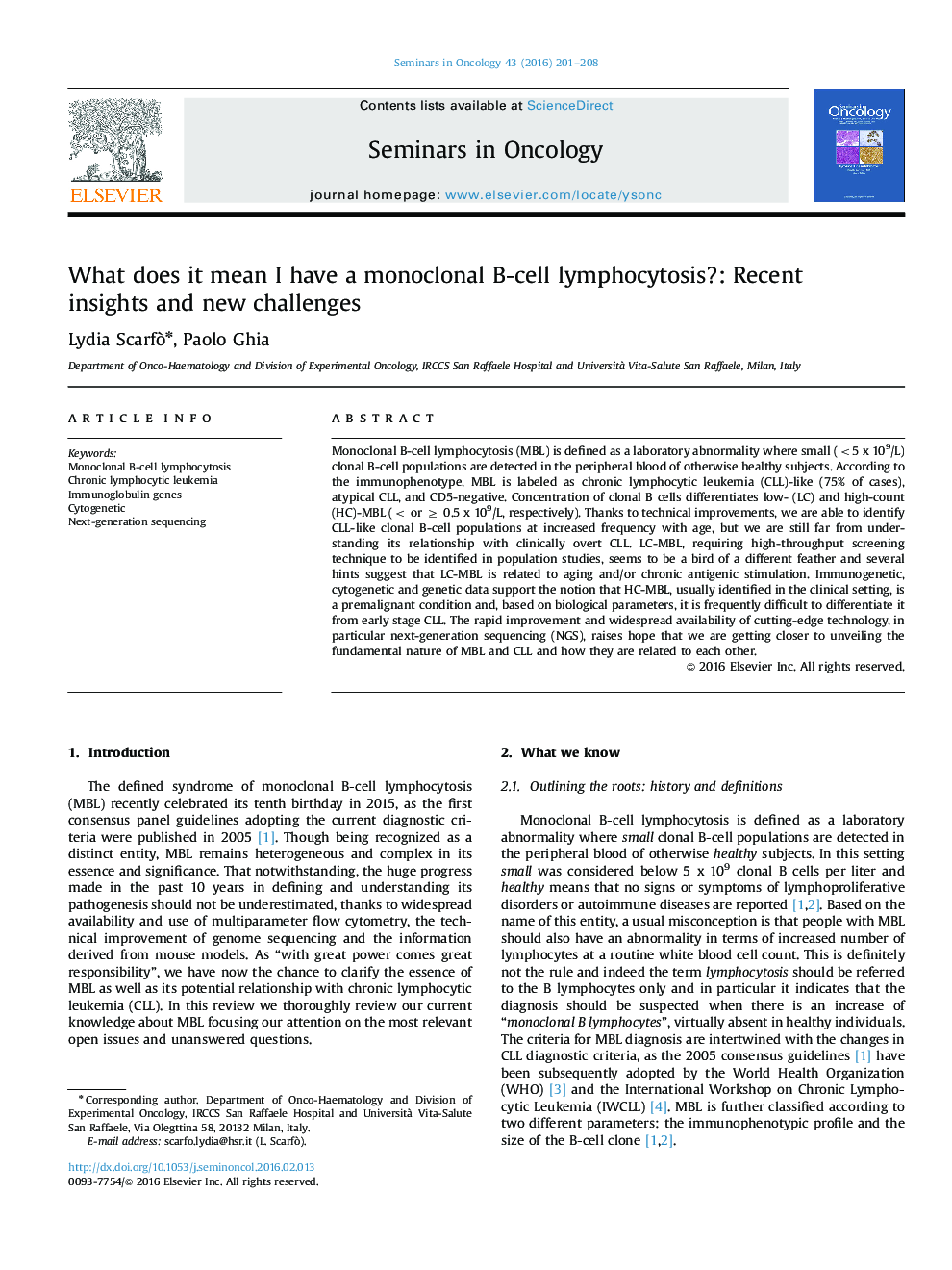| Article ID | Journal | Published Year | Pages | File Type |
|---|---|---|---|---|
| 2161743 | Seminars in Oncology | 2016 | 8 Pages |
Abstract
Monoclonal B-cell lymphocytosis (MBL) is defined as a laboratory abnormality where small (<5 x 109/L) clonal B-cell populations are detected in the peripheral blood of otherwise healthy subjects. According to the immunophenotype, MBL is labeled as chronic lymphocytic leukemia (CLL)-like (75% of cases), atypical CLL, and CD5-negative. Concentration of clonal B cells differentiates low- (LC) and high-count (HC)-MBL (< or ⥠0.5 x 109/L, respectively). Thanks to technical improvements, we are able to identify CLL-like clonal B-cell populations at increased frequency with age, but we are still far from understanding its relationship with clinically overt CLL. LC-MBL, requiring high-throughput screening technique to be identified in population studies, seems to be a bird of a different feather and several hints suggest that LC-MBL is related to aging and/or chronic antigenic stimulation. Immunogenetic, cytogenetic and genetic data support the notion that HC-MBL, usually identified in the clinical setting, is a premalignant condition and, based on biological parameters, it is frequently difficult to differentiate it from early stage CLL. The rapid improvement and widespread availability of cutting-edge technology, in particular next-generation sequencing (NGS), raises hope that we are getting closer to unveiling the fundamental nature of MBL and CLL and how they are related to each other.
Keywords
Related Topics
Life Sciences
Biochemistry, Genetics and Molecular Biology
Cancer Research
Authors
Lydia Scarfò, Paolo Ghia,
